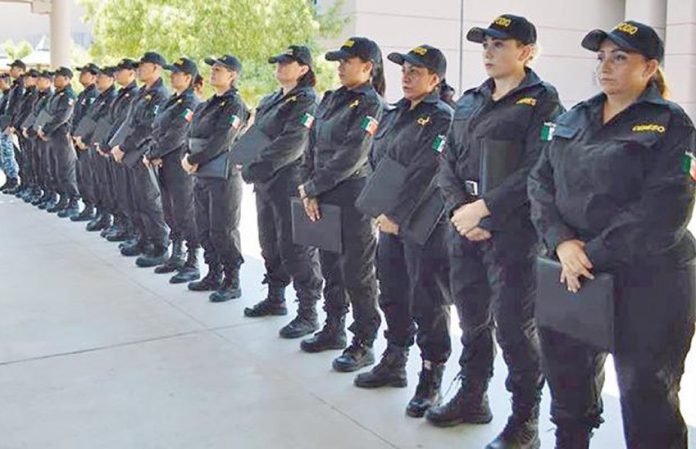The number of women joining police forces in Baja California Sur and showing interest in the profession is on the rise, statistics and anecdotal evidence indicate.
The first generation of police cadets to undertake their training at the state’s new police academy in La Paz graduated in May and seven women were among the 32 new officers, making up 22% of the entire cohort.
Another seven women are part of a group of 23 cadets currently undergoing training at the same academy to become municipal police officers, while 10 women are preparing to become state police compared to just three men.
A further seven women are in training to become prison officers, meaning that a total of 31 new female cops will soon be patrolling the state’s streets or maintaining the peace in its prisons.
“Gradually, more women are getting interested [in becoming police officers] . . .” police academy director Miguel Ángel Espinoza León told the newspaper El Universal.
“We’re going to events with information modules to strengthen recruitment and it’s very interesting that there are more and more women who approach us to ask about the requirements, the procedures and the training,” he added.
One of the female recruits who graduated in May is 19-year-old Jacqueline Galván Meza.
Galván passed her training with flying colors to top her class with an average grade of 9.9 and is now a fully-fledged member of the Los Cabos municipal police, fulfilling the dream she has had since she was a little girl, to follow her mother and grandmother into the profession.
For her and other graduates, getting their police uniforms and badges required a lot of hard work, dedication and perseverance.
To qualify as municipal or state police officers, cadets have to complete 972 hours of training and study, while prison officer aspirants undergo 474 hours of preparation.
Another female recruit is 20-year-old Daniela Aragón Vences, who left her home in Cuernavaca, Morelos, to pursue the chance to become a police officer in a state where there were 788 intentional homicides last year, making it one of Mexico’s most dangerous.
Unlike Galván, Aragón’s dream is not to follow in the footsteps of a family member but rather to become independent and to be able to help her mother support her two younger brothers.
“I’m a woman, I’m the oldest, it’s a big responsibility but I feel strong and capable of things. There’s no greater motivation to better yourself than your family . . . I didn’t want to get stuck but to keep studying and to keep working my way up in this career,” she said.
Aragón added that she knew about the high levels of violence in Baja California Sur, and in particular Los Cabos, but said she isn’t afraid and is confident that after she completes her training, she will be ready to do the job.
“That’s what they’re preparing us for, to deal with whatever may happen. You feel more confident as you learn more,” she said.
Homicide levels in the state declined by 60% in the first seven months of 2018 compared to the same period last year, statistics from the National Public Security System show, but more police officers are still needed to provide security for a growing population.
In Los Cabos, the state’s premier tourist destination, at least another 900 police officers are needed, according to municipal police chief Juan Zamorano Martínez.
Source: El Universal (sp)
